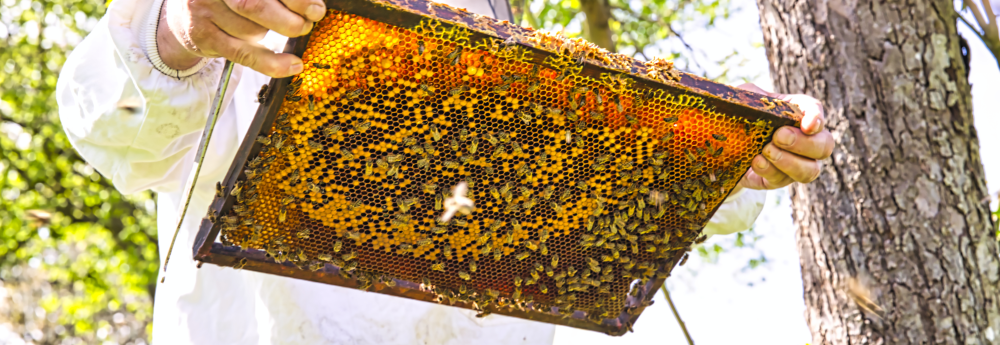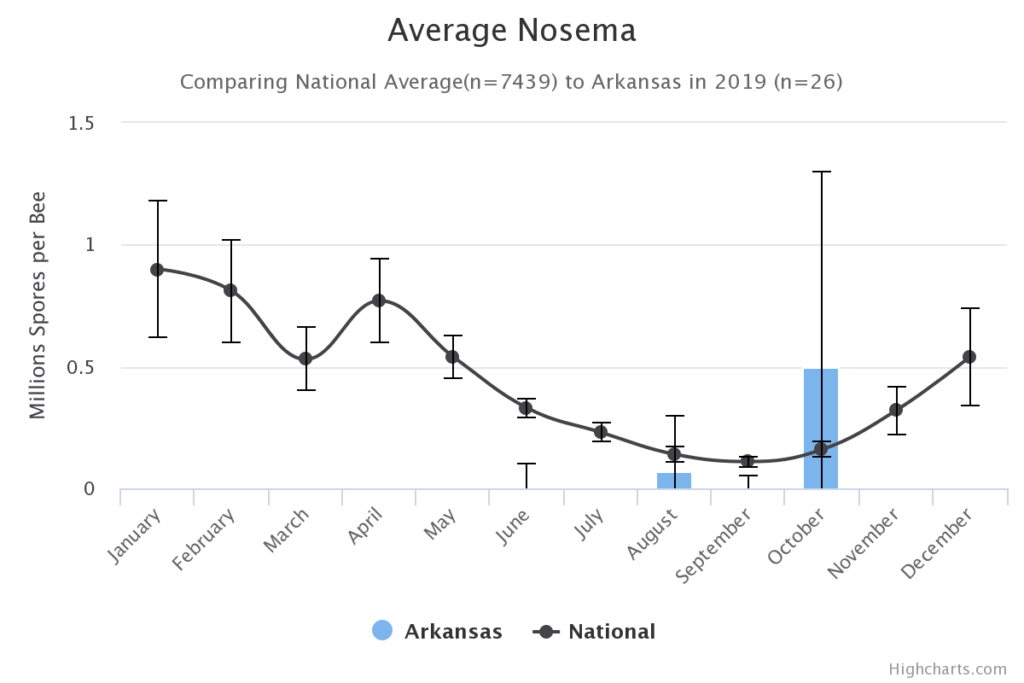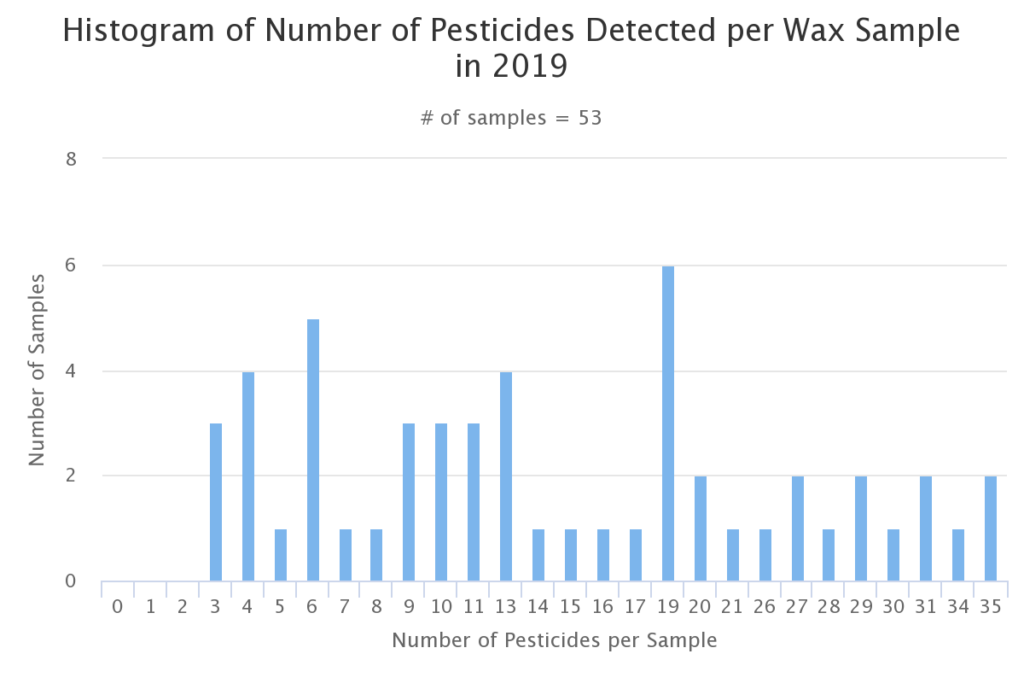
Nosema is a seasonal problem that can make a comeback in the winter months in damp, cold climates, especially when ventilation is poor. Bee Informed Partnership (BIP) monitors Nosema in Sentinel Apiary Program colonies. For example, last year’s data shows large Nosema flareups in October in AR (below).

While this year’s data is not yet available unless you are participating in the BIP Sentinel Apiary Program or do the counts yourself in your apiary, the following symptoms that may be connected to Nosema: slow spring buildup, low adult bee population, few nurse bees (TheBeeMD.com). These symptoms are quite common, can be masked by other stressors, like pesticides. It is not surprising that Nosema disease is under-diagnosed in the field.
BIP monitors pesticide levels in beeswax as well, and there are no samples of wax collected in the past five years which don’t have at least one pesticide detected (see example below). Average beeswax sample in 2019 contained traces of 10-20 different pesticides.

There is an accumulation of evidence supporting the benefits of probiotic bacteria – specifically, lactic acid bacteria – for honeybees exposed to pesticides such as fungicides and neonicotinoids.
Previous studies underscored the deleterious Effects of Neonicotinoid Pesticides on Immune Pathways of insects, and found that neonicotinoid-induced pathogen susceptibility is mitigated by Lactobacillus plantarum immune stimulation in a Drosophila melanogaster model.
A new study published in February by Peghaire et al., is titled: A Pediococcus strain to rescue honeybees by decreasing Nosema ceranae- and pesticide-induced adverse effects. The study was conducted by researchers from Université Clermont Auvergne and probiotics manufacturer Lallemand Animal Nutrition.
Peghaire et al. looked at the risk factors to honeybees, pathogen Nosema ceranae, fungicide boscalid, and neonicotinoid pesticide thiamethoxam. These pesticides are also formulated into Cruiser, Pristine and other end-use products (sprays and other formulations). These risk factors significantly shorten honeybee lifespan, decrease honeybee colony population, and cause precocious foraging, among other deleterious effects.

Authors found that “Pediococcus strain can rescue honeybees from N. ceranae– and pesticide adverse effects” and can act “by stimulating the honeybee immune and detoxication systems” to achieve this benefit.
Highlights of the study:
• The honeybee physiology is disturbed by Nosema ceranae and pesticides.
• A Pediococcus strain can rescue honeybees from Nosema ceranae and pesticide adverse effects.
• Pediococcus can act by stimulating the honeybee immune and detoxication systems.
Feeding Pediococcus to the honeybees exposed to boscalid+thiamethoxam decreased mortality from 41% mortality to 15% mortality. Feeding Pediococcus to the honeybees artificially infected with Nosema, decreased Nosema spores per bee 80%. Gene expression analysis indicates that the bacteria can achieve this benefit by stimulating the honeybee immune and detoxication systems.
Pediococcus is a genus of gram-positive lactic acid bacteria, placed within the family of Lactobacillaceae.
